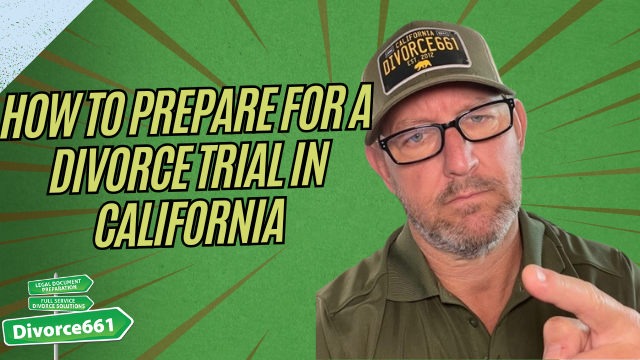How to Prepare for a Divorce Trial in California
Trials in family court usually happen when spouses cannot agree on custody, support, or property. The outcome of those trials often hinges less on courtroom theatrics and more on preparation. Being organized and presenting a clear, well-supported case can make a meaningful difference in what the judge decides.
Why preparation matters
Being organized isn’t just about neat paperwork. It’s about presenting a compelling case.
Preparation gives you confidence, helps the judge understand your position, and reduces surprises during testimony. Whether you have an attorney or are representing yourself, the better prepared you are, the more persuasive you will be.
Core steps to prepare for a divorce trial
- Collect critical documents and evidenceGather items that support your claims about finances, parenting, and property. These include bank statements, tax returns, pay stubs, credit card statements, deeds, title documents, and receipts for significant expenses.
- Preserve communicationsSave relevant texts, emails, social media messages, and voicemail transcripts. These often help establish timelines, agreements, or behaviors relevant to custody and support.
- Update financial disclosuresMake sure your mandatory financial disclosures are current and accurate. Courts rely heavily on these documents when determining support, division of assets, and other financial issues.
- Organize evidence logicallyLabel exhibits, create an index, and put documents in a sequence that tells a clear story. Consider binding or tabbing exhibits for easy reference during the hearing.
- Prepare a trial briefDraft a concise yet comprehensive trial brief that outlines your legal arguments, summarizes the evidence, and cites the key facts you want the judge to focus on.
- Practice testimonyPrepare your testimony and, if applicable, your witnesses. Review key facts, practice concise answers, and focus on staying calm and factual under cross-examination.
What to include in your evidence packet
- Bank records and transaction histories
- Tax returns and W-2s
- Pay stubs and employment records
- Mortgage, deed, and title documents
- Receipts for major purchases or repairs
- Texts, emails, and social media messages relevant to custody or agreements
- Medical, school, or counseling records if custody or health issues are involved
- A clear exhibit index and a table of contents
How to write an effective trial brief
A trial brief is your chance to speak directly to the judge in writing. Keep it:
- Concise — focus on the facts and issues that matter most.
- Organized — use headings to separate custody, support, and property arguments.
- Evidence-based — reference exhibit numbers and attach key documents.
- Persuasive — explain why your requested outcome aligns with California family law and the best interests of any children involved.
Include a short introduction, a statement of facts, legal argument sections (if appropriate), and a clear request for relief so the judge knows what you want.
What judges notice in a well-prepared case
- Current and accurate financial disclosures
- Clear and organized exhibits that tell a coherent story
- Concise written arguments that point to specific evidence
- Witnesses who are prepared and offer relevant testimony
- A party who appears credible, punctual, and respectful in court
Real client story: preparation changed the outcome
We worked with a client who chose to represent herself at trial. With focused help, her evidence was organized, her trial brief was clear, and her court forms were completed correctly. She walked into the courtroom calm and prepared. The judge noticed her organization and the clarity of her presentation. Preparation strengthened her credibility and made the court process far less intimidating.
How we can help
At Divorce661 we specialize in helping people prepare for divorce trials without the cost of full attorney representation. Our services include organizing your evidence, drafting a trial brief, reviewing and updating forms, and coaching you so your message is clear in court.
We offer flat-fee divorce solutions across California and provide support that keeps you focused on the facts that matter. If you are facing a trial or want to get your case court-ready, we can help you turn an overwhelming process into something manageable and strategic.
Next steps
Get started by making a list of the documents and communications related to custody, support, and property. Prioritize financial disclosures and begin indexing your exhibits.
Need help organizing your case or preparing a trial brief? Schedule a free consultation at Divorce661.com. We will help you walk into court prepared, confident, and focused.



